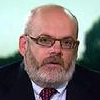With the unemployment rate so low, why is inflation so muted? Globalization, at least in part, is the answer, said San Francisco Fed President Mary Daly on Tuesday.
In a speech to The Commonwealth Club in San Francisco, Daly said that both workers and businesses are finding it hard to set prices in the new global marketplace.
For their part, workers have suffered from a loss of bargaining power, Daly said.
“Declining unionization — along with increased automation and globalization — have made it harder for workers to push for higher pay, even in very healthy job markets,” she said.
At the same time, many firms have lost pricing power amid global competition, Daly said. “This means they have a harder time passing along rising costs, such as wages, to final goods prices.”
These factors are “wedges” that complicate the simple theory that higher employment leads to rising wages and prices, she said.
The Fed said last week that low inflation readings mean the central bank can be “patient” before raising its benchmark interest rates again. The median forecast of Fed officials was for one more rate hike coming next year.
Financial markets now think the next move by the U.S. central bank will be to ease monetary policy. They are pricing in a 25% chance of two rate cuts by early 2020, according to the CME Group’s FedWatch tool.
The yield on the 10-year Treasury note TMUBMUSD10Y, +0.92% has slumped to 2.41%, close to lows not seen since December 2017.
In a moderated discussion after her speech, Daly downplayed the recent inversion of the yield curve, saying there were a lot of factors holding down long-term rates. An inversion, an unusual condition in which rates for shorter-dated government debt rise above rates for its longer-dated counterparts, is often a leading indicator of recession
“I’m not dismissing this and saying we’re not paying attention to it. I’m just saying I’m not freaked out” by the yield-curve inversion, Daly said. She quickly adding that she hoped markets wouldn’t get upset either.
“Steady in the boat,” Daly said.
Daly is not a voting member of the Fed’s interest-rate-setting committee this year. She did not give a forecast for interest rates in her prepared remarks.
In her speech, Daly said another “wedge” in the theory is that employees are demanding alternative forms of compensation, including free transportation and unlimited time off. These new forms of compensation aren’t being captured in traditional measures of wages and salaries, and muting the signal the Fed is receiving about the strength of the economy.
The Fed itself is also a wedge because it has a 2% inflation target that helps keep inflation expectations in check, Daly noted.
Daly said she felt a “little less” than good about where inflation stands at the moment.
“We’ve grazed 2% here and there, including briefly last year, but it hasn’t been sustainable,” Daly said. She said too low inflation is concerning because it makes the chance of deflation — or negative inflation — more likely and harder for the Fed to adjust interest rates in the face of economic shocks.
Readings of the Fed’s favorite inflation indicator, the personal consumption expenditure price index, have been sparse so far this year given the partial government shutdown.
The consumer price index is running at a 1.5% annual rate as of February, according to government statistics. That’s down from almost 3% last summer.
The core CPI index, which excludes food and energy costs, has slowed to a 2.1% annual rate.
Read: Inflation doesn’t set off any alarm bells
Daly also dismissed fear of a recession.
She said the economy is slowing, but from a rapid pace in 2018 to a more sustainable growth.
“That’s still a solid, healthy, expansion,” she said.



